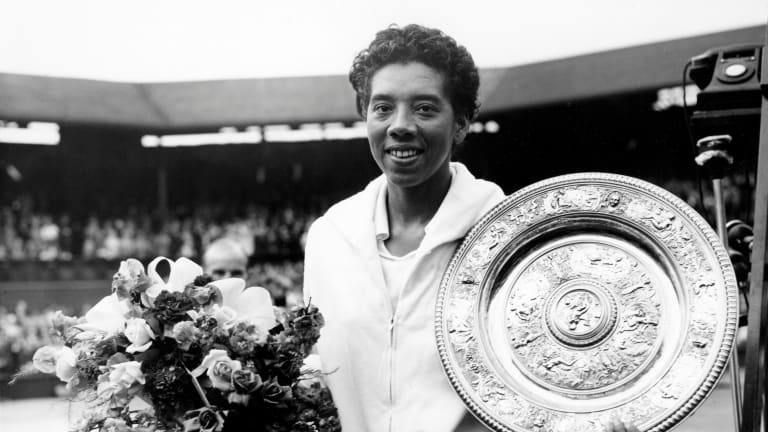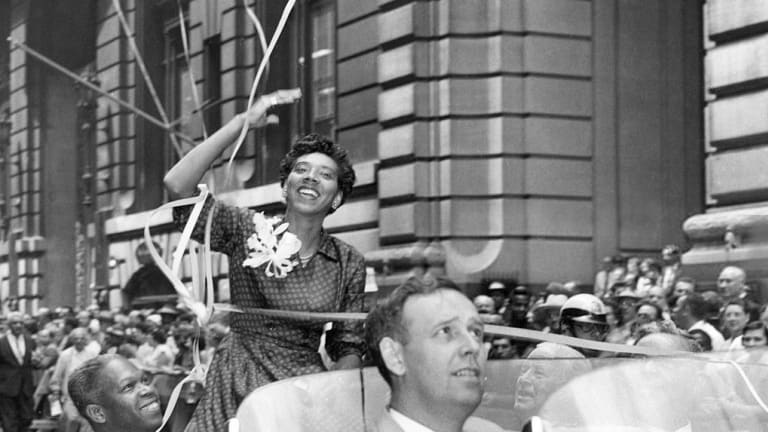#CentreCourtCentennial
1957: “At last! At last!” Althea Gibson fulfilled her destiny at Wimbledon, and with every win she opened up the sport a little wider
By Jun 16, 2022#CentreCourtCentennial
Serena Williams' energetic return to Centre Court after a year away from the game was a brave effort, and one worthy of her legend
By Jun 29, 2022#CentreCourtCentennial
2009: The first full match under Centre Court's roof showcased British tennis' newest Wimbledon title contender, Andy Murray
By Jun 23, 2022#CentreCourtCentennial
2008: Rafael Nadal and Roger Federer produced a quantum leap in quality and entertainment in their classic, daylong final
By Jun 22, 2022#CentreCourtCentennial
2007: After fighting for pay equity at Wimbledon, Venus Williams became the first woman to collect an equal-sized champion’s check
By Jun 21, 2022#CentreCourtCentennial
1980: The five-set final between Bjorn Borg and John McEnroe was the pinnacle of their rivalry—and the Woodstock of their tennis era
By Jun 20, 2022#CentreCourtCentennial
1975: In defeating a seemingly invincible Jimmy Connors, Arthur Ashe showed that with enough thought and courage, anyone in tennis can be beaten
By Jun 19, 2022#CentreCourtCentennial
1968: At the first open Wimbledon, Billie Jean King receives her first winner’s check—and notices a “big difference” with her male counterparts
By Jun 18, 2022#CentreCourtCentennial
1967: With the Wimbledon Pro event, professional tennis finally comes to the amateur game’s most hallowed lawn
By Jun 17, 2022#CentreCourtCentennial
1937: With a World War looming and one man playing for his life, Don Budge and Baron Gottfried von Cramm stage a Davis Cup decider for the ages
By Jun 15, 20221957: “At last! At last!” Althea Gibson fulfilled her destiny at Wimbledon, and with every win she opened up the sport a little wider
Althea Gibson didn’t stop until she had proven that African-Americans could succeed at every level and on every stage of this formerly all-white sport. Centre Court, the biggest of those stages, was the final stop on her ascent.
Published Jun 16, 2022
Advertising
Advertising

Gibson was 30 when she won Wimbledon, which even now is late for a first-time Grand Slam winner. But no other first-time winner has faced as many obstacles as she did.
© INTERNATIONAL NEWS PHOTOS/AFP, 1958
Advertising

"New York City will pay tribute to the gallant young lady who became the tennis champion of the world by winning the Wimbledon matches in England last week," read the city's announcement for Althea Gibson's ticker tape parade.
© Wikimedia Commons, 1957